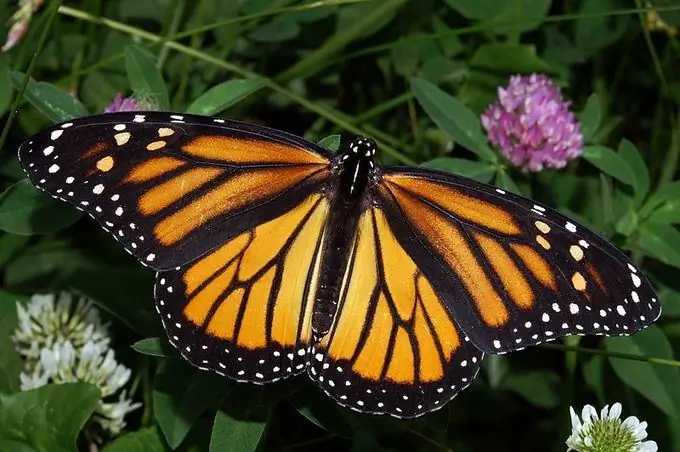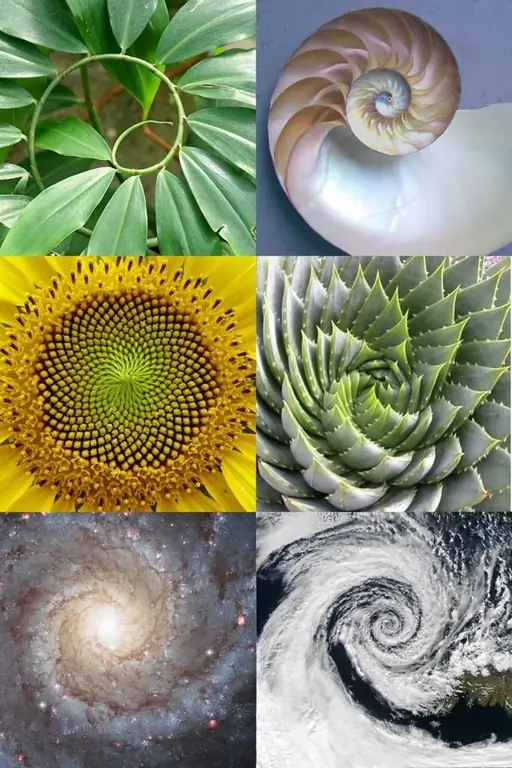Natural geometric patterns or patterns appear as repeating shapes that can sometimes be described or represented by mathematical models.
Geometry in nature and life comes in various forms and types, such as symmetry, spirals or waves.
History
For the first time, ancient Greek philosophers and scientists - Pythagoras, Empedocles and Plato - took up questions of geometry in nature. By analyzing examples of predictable or ideal geometric shapes in plants and animals, they tried to demonstrate order and symmetry in nature.
Modern attempts to study geometry in nature began in the 19th century with the efforts of the Belgian physicist Joseph Plateau, who developed the concept of the minimum surface of a soap bubble. The first modern attempts first concentrated on demonstrating ideal and predictable geometric shapes, and then turned to the development of models that predict the appearance and manifestation of geometry in nature.
In the 20th century, mathematician Alan Turing worked on the mechanisms of morphogenesis, which explains the appearance in animalsvarious patterns, stripes, spots. A little later, the biologist Aristide Lindenmeier, together with the mathematician Benoit Mandelbrot, will complete work on mathematical fractals that repeated the growth patterns of some plants, including trees.
Science
Modern sciences (mathematics, physics and chemistry), with the help of technologies and models, try not only to explain, but also to predict the geometric patterns found in nature.
The shape and color of many living organisms, such as peacock, hummingbirds and sea shells, are not only beautiful, but also geometrically correct, which attracts the curiosity of scientists. The beauty that we observe in nature can be caused naturally, mathematically.
The observed natural patterns in mathematics are explained by chaos theory, which works with spirals and fractals. Such patterns obey the laws of physics, in addition, physics and chemistry, using abstract mathematics, predict the shapes of crystals, both natural and artificial.
Biology explains the geometry in nature by natural selection, where such regular characteristics as stripes, spots, bright colors can be explained by the need for masking or sending signals.
Types of patterns
In nature, there are many repeating patterns that appear in various geometric shapes. Types of basic regularities of geometry in nature, photos and their descriptions can be found below.
Symmetry. This geometric shape is one of the most common in nature. Most common in animalsmirror symmetry - butterflies, beetles, tigers, owls. It is also found in plants, such as maple leaves or orchid flowers. In addition, symmetrical geometry in nature can be radial, five-ray or six-fold, like snowflakes.

Fractals. In mathematics, these are self-similar constructions that are infinite. In nature, it is impossible to detect such an endless self-repeating form, therefore, approximations of fractal patterns are called geometric fractals in nature. Such geometry can be observed in nature in fern leaves, broccoli, pineapple fruit.

Spirals. These forms are especially common among molluscs and snails. Scientists observe spiral shapes in space, for example, spiral galaxies. The spiral is called the golden ratio of Fibonacci.

Meanders. The randomness of dynamical systems in mathematics manifests itself in nature in such forms as meanders and flows. Natural geometry takes the form of a broken or rather curved line, such as a river flow.
Waves. They are caused by disturbances and movements of air, wind currents, spread both through air and through water. In nature, these are not only sea waves, but also desert dunes, which can form geometric shapes - lines, crescents and parabolas.
Mosaic. Created by repeating the same elements on the surface. Mosaic geometry in wildlife is found in bees: they buildhive of honeycombs - repeating cells.

Formation of patterns
In biology, the formation of a geometric color is due to the process of natural selection. Back in the middle of the 20th century, Alan Turing managed to describe the mechanism for the appearance of spots and stripes in the color of animals - he called it the reaction-diffusion model. Certain cells of the body contain genes that are controlled by chemical reactions. Morphogen leads to the formation of skin areas with dark pigment (spots and stripes). If the morphogen is present in all skin cells - the color of the panther is obtained, if it is present unevenly - the usual spotted leopard.






